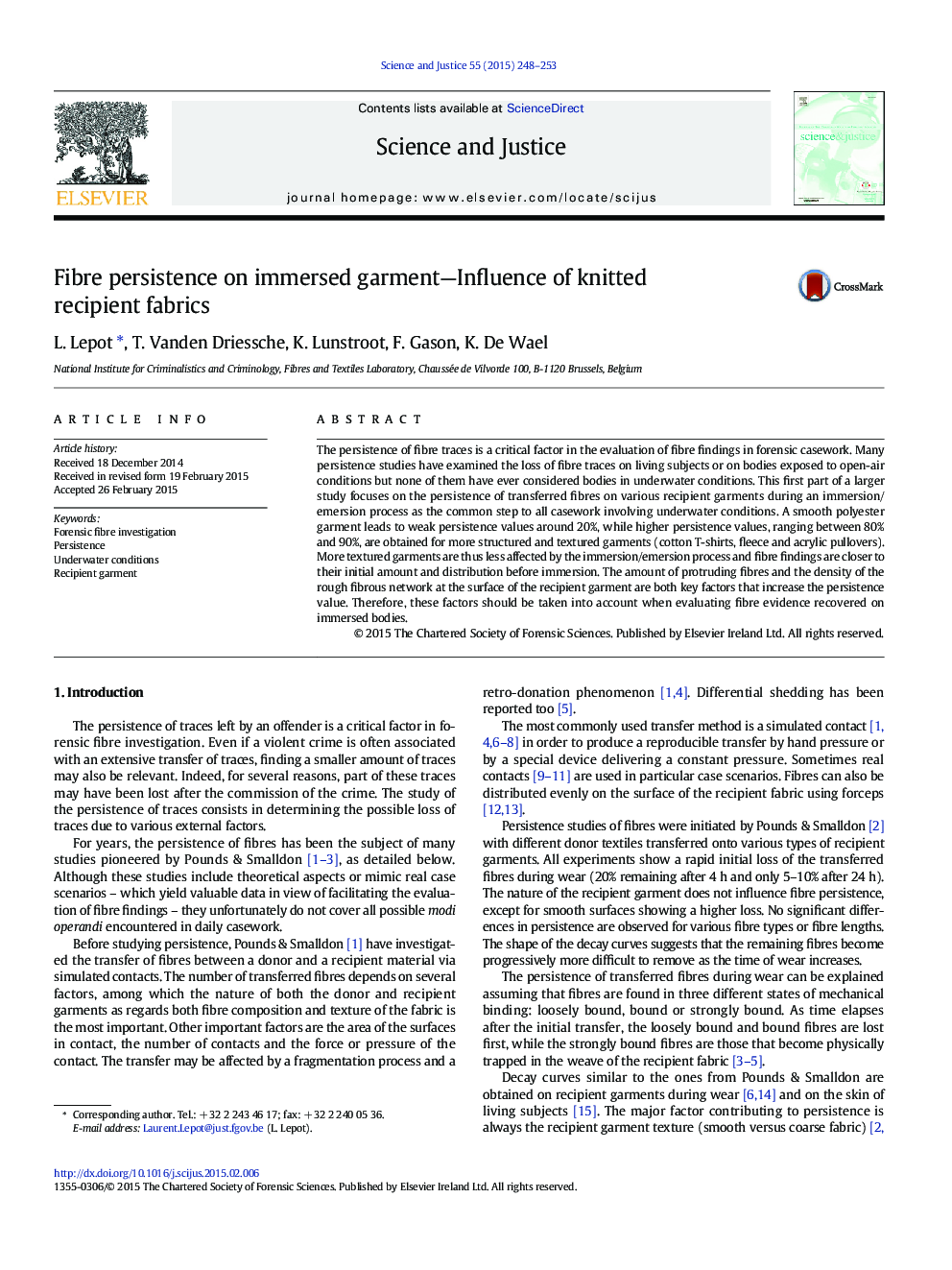| Article ID | Journal | Published Year | Pages | File Type |
|---|---|---|---|---|
| 10255427 | Science & Justice | 2015 | 6 Pages |
Abstract
The persistence of fibre traces is a critical factor in the evaluation of fibre findings in forensic casework. Many persistence studies have examined the loss of fibre traces on living subjects or on bodies exposed to open-air conditions but none of them have ever considered bodies in underwater conditions. This first part of a larger study focuses on the persistence of transferred fibres on various recipient garments during an immersion/emersion process as the common step to all casework involving underwater conditions. A smooth polyester garment leads to weak persistence values around 20%, while higher persistence values, ranging between 80% and 90%, are obtained for more structured and textured garments (cotton T-shirts, fleece and acrylic pullovers). More textured garments are thus less affected by the immersion/emersion process and fibre findings are closer to their initial amount and distribution before immersion. The amount of protruding fibres and the density of the rough fibrous network at the surface of the recipient garment are both key factors that increase the persistence value. Therefore, these factors should be taken into account when evaluating fibre evidence recovered on immersed bodies.
Keywords
Related Topics
Physical Sciences and Engineering
Chemistry
Analytical Chemistry
Authors
L. Lepot, T. Vanden Driessche, K. Lunstroot, F. Gason, K. De Wael,
